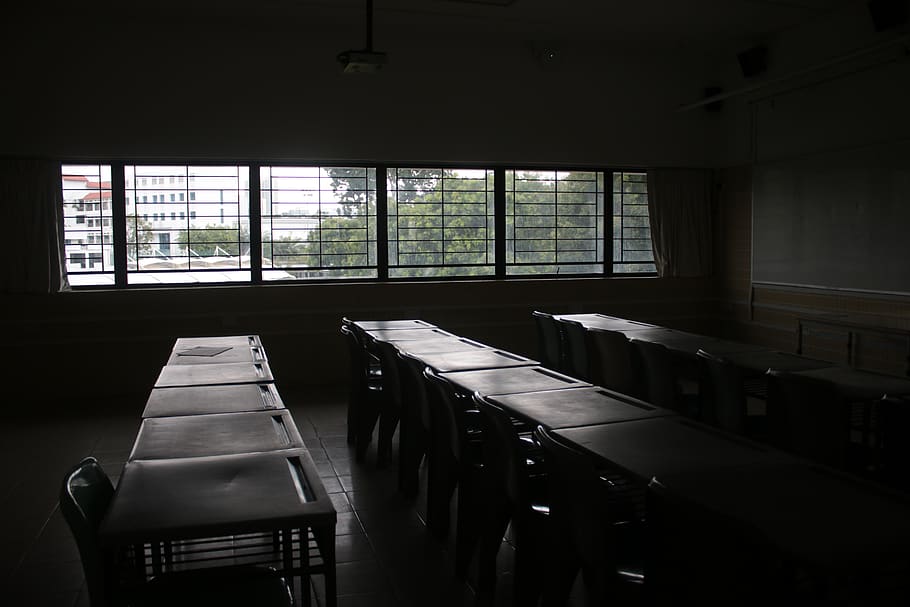Devin Vodicka
In Learner-Centered Leadership I wrote:
“Even more bewildering is the way that we allocate time to these courses. Just about every high school in the US awards five credits for a ninety-hour course, and I have found very few educators who understand how we came to organize ourselves into this model … We award ‘credit’ based on seat time and further associate funding streams with this seat time … It is time for a change.”
page 118
I should note that this excerpt was written before COVID-19.
Now that we are approaching fall where many schools will be compelled to start the year with a distance learning model, the ridiculousness of these archaic seat time requirements is even more pronounced.
Here are two compelling reasons for us to eliminate seat-time.
Seat-time is Antiquated
The origins of the seat-time requirements date back to the beginning of the industrial era when our system was shifting from a very decentralized, “one room schoolhouse” model to a factory-model that emphasizes standardization and efficiency. More specifically, the Carnegie Foundation for the Advancement of Teaching released an influential report in 1906 defining Carnegie Units and student hours (The Student Hour is approximately 12 hours of class or contact time, approximately 1/10 of the Carnegie Unit). Many educators are also unaware that the creation of a pension fund for college professors who shifted to Carnegie Units was a catalyst for the rapid spread of the approach. While the time-based system was derived from input from many college professors, it is clear that they did not have the benefit of a modern understanding of the “science of learning” from decades of neuroscience and social science research.
After more than a century of implementing this standardized approach, in 2013 the Carnegie Foundation stated that recent developments that provided for detailed analytics, portability of learning experiences, and asynchronous options led them to conclude that “Measuring student learning by ‘seat time’ in this new educational era most certainly seems obsolete.” In short, what the Carnegie Foundation was hinting at was an understanding that there were better ways to understand actual learning than the duration of time spent in a physical classroom.
Distance Learning Makes Seat-Time Accounting Impossible
With Coronavirus rates increasing in many parts of the United States, the vast majority of students and teachers will not have the opportunity to be in physical classrooms for the foreseeable future. Even when campuses reopen we can expect waves of rolling closures due to recurrences that will again escalate the risks of physical proximity. Distance learning enables more flexibility with asynchronous options and replication of a traditional school day is impractical and inadvisable.
From afar, teachers do not have visibility into how students are using their time. Online systems that can track how long a student has been logged-in have no idea how much time the student was actually engaged in their learning. In addition, many learning experiences are off-line (example: reading a book or creating an illustration on paper). As a result, there is no way to even account for “seat time” during distance learning.

In reality, we should be less concerned with the amount of time spent on particular tasks and more concerned with how our students are learning, developing, and applying their knowledge, habits, and skills. Outcome-based education and the origins of the standards movement are examples of not-so-new initiatives that demonstrate how there have been efforts underway for decades to shift the focus of schools away from time and towards learning. Now, we have new opportunities with competency-based, mastery learning. We have emerging ways of credentialing these competencies through badges, blockchain, and other portable systems.
Given how new distance learning is to so many, there are some well-intended expectations that are being established in some settings. For example, in some places there is a requirement of at least one hour per day of synchronous, online interaction between teachers and students. I want to be clear about saying that I have no objection to these requirements as they crystallize guidance in such a way that it is likely to improve opportunities for students. However, these should be seen as the floor for our expectations about how to use time in this new era. They should not constrain our creativity and ingenuity regarding new and improved schedules.
We should all take note that the Carnegie Foundation, the originators of our current system, advocated for a change seven years ago to a new model. The rate of change was already accelerating around us due to globalization and advances in technology. Now is the time, during this global pandemic where we are forced to rapidly reimagine all aspects of our system, for us to move away from an antiquated, impractical orientation to seat time.
Let’s focus on learning. As we do so, we are likely to better serve our learners, our communities, and our society.
5 thoughts on “The Ridiculousness of Seat Time Requirements”